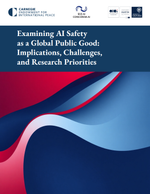Energy
Jesus Lizana, Claire E.Hallorana, Scot Wheeler, Nabil Amghar, Renaldi Renald, Markus Killendahl, Luis A. Perez-Maqueda, Malcolm McCulloch & Ricardo Chacartegui
View Journal Article / Working PaperHeating decarbonisation through electrification is a difficult challenge due to the considerable increase in peak power demand. This research proposes a novel modelling approach that utilises easily accessible national-level data to identify the required heat storage volume in buildings to decrease peak power demand and maximises carbon reductions associated with electrified heating technologies through smart demand-side response. The approach assesses the optimal shifting of heat pump operation to meet thermal heating demand according to different heat storage capacities in buildings, which are defined in relation to the time (in hours) in which the heating demand can be provided directly from the heat battery, without heat pump operation. Ten scenarios (S) are analysed: two baselines (S1–S2) and eight load shifting strategies (S3–S10) based on hourly and daily demand-side responses. Moreover, they are compared with a reference scenario (S0), with heating currently based on fossil fuels. The approach was demonstrated in two different regions, Spain and the United Kingdom. The optimal heat storage capacity was found on the order of 12 and 24 h of heating demand in both countries, reducing additional power capacity by 30–37% and 40–46%, respectively. However, the environmental benefits of heat storage alternatives were similar to the baseline scenario due to higher energy consumption and marginal power generation based on fossil fuels. It was also found that load shifting capability below 4 h presents limited benefits, reducing additional power capacity by 10% at the national scale. The results highlight the importance of integrated heat storage technologies with the electrification of heat in highly gas-dependent regions. They can mitigate the need for an additional fossil-based dispatchable generation to meet high peak demand. The modelling approach provides a high-level strategy with regional specificity that, due to common datasets, can be easily replicated globally.




